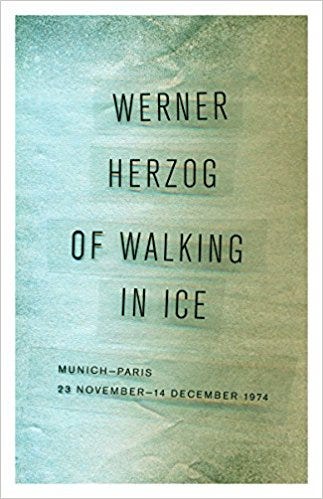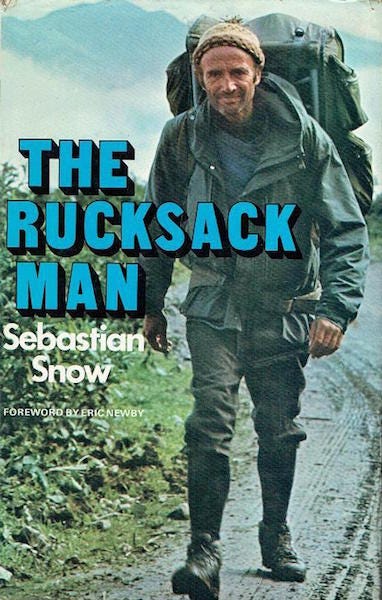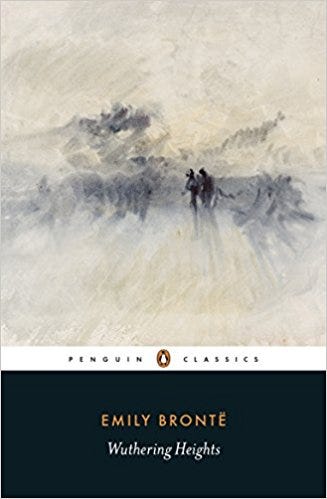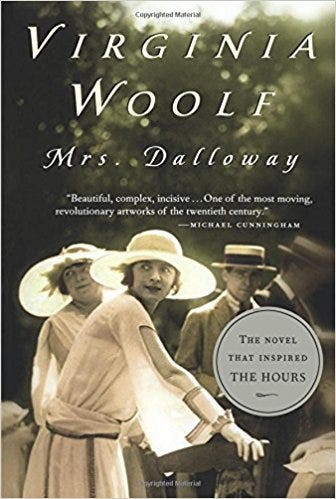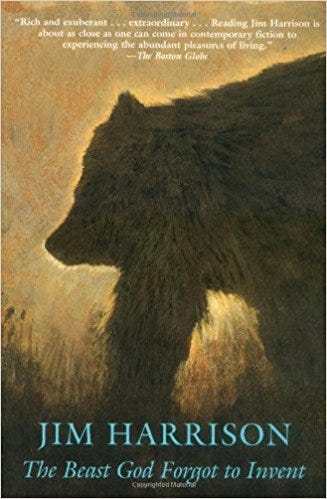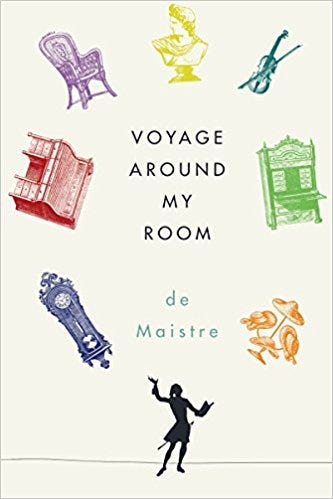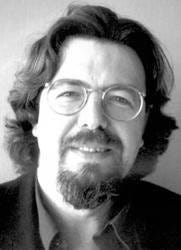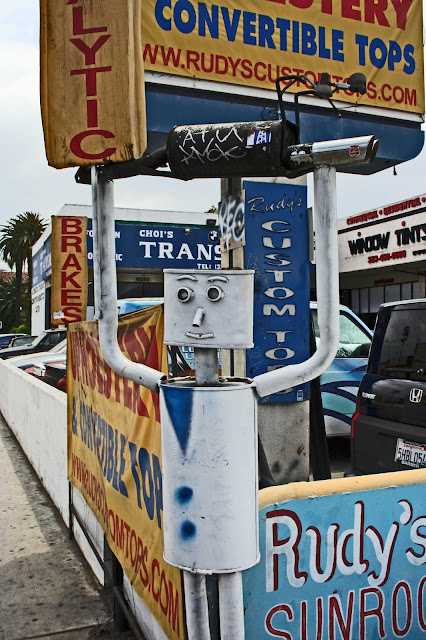I did this for "Electric Literature"
You can see at their website, along with much other fine stuff
https://electricliterature.com/9-walking-books-that-let-you-follow-in-literary-footsteps-3880d1eaaaa4
*
9 Walking Books That Let You Follow in Literary Footsteps
From Dublin to Panama to your own backyard, these books lay out a path for walking around the world
My new novel The Miranda features a lead character who wants to walk around the world but doesn’t want to leave his own backyard, so he decides to walk 25,000 miles — the circumference of the earth — by doing laps around his own garden path. However, his sinister professional past proves difficult to walk away from.
I join a very long line of writers who have walked, and walkers who have written. I’m not in competition with my predecessors, either as a writer or as a walker, but here are some works by a few of my favorite literary fellow travelers. Some of these are fiction, some non-fiction—although all the fiction contains autobiographical elements, and there’s considerable invention in all the memoir.
Dublin: Ulysses, James Joyce
An obvious one to start with: the novel follows Leopold Bloom and Stephen Dedalus as they spend a day wandering around Dublin, pursuing their separate, then crossed, destinies. There are endless books, guides, maps, organized walking tours to help you follow the characters’ routes in the real world. And the great thing is that any of these walks can easily be turned into a pub crawl. Ulysses also contains what I think is one of the truly great statements about walking: “We walk through ourselves, meeting robbers, ghosts, giants, old men, young men, wives, widows, brothers-in-law. But always meeting ourselves.”
Munich to Paris: Of Walking In Ice, Werner Herzog
In the winter of 1974, Herzog walked the 500-plus miles from Munich to Paris in the firm belief that this walking pilgrimage would save the life of his friend, the film historian and critic Lotte Eisner, allegedly suffering from a serious illness. The walk was as arduous as you might expect, tramping through snow, sleeping in abandoned buildings, and Herzog is his usual heroically gloomy self. But the surprising thing is (or maybe we shouldn’t be surprised at all) — it worked. Lotte Eisner lived for another decade.
Tierra del Fuego to Panama: The Rucksack Man, Sebastian Snow
They don’t make ’em like Sebastian Snow anymore, and they never made many. Rejected from the army because of a knee injury incurred playing school sports, he became one of the twentieth century’s most relentless and eccentric world travelers. The Rucksack Man is his account of walking 8,700-miles from Tierra del Fuego to Panama, along the way getting his contact lenses fused to his eye balls, being bitten by a vampire bat, and having the amazing strength of character to refuse the many lifts he was offered.
Yorkshire moors: Wuthering Heights, Emily Bronte
The title is the name of an isolated farmhouse in the wilds of the Yorkshire Moors, the home of Heathcliff. It’s a long way from anywhere and yet the characters rarely think twice about walking the considerable distances there and back, and even a heavy snowfall only deters them slightly. Admittedly these journeys are sometimes necessary to further the plot, and of course the servants do at least twice as much walking as the property-owning classes.
New York: Open City, Teju Cole
Julius, a Nigerian student in New York, walks around Manhattan, explores the city, and tries to forget about the girlfriend he’s recently broken up with, observing the present while remembering his past in Nigeria and Belgium. This strikes me as one of the best aspects of walking: it requires you to pay attention to where you are and where you’re going, but because walking is also partly automatic, it leaves the walker’s mind free to set off in other directions.
London: Mrs. Dalloway, Virginia Woolf
It would be more or less possible to track the route that Clarissa Dalloway takes — Westminster, St James Park, Piccadilly, Bond Street — as she sets out to buy flowers for a party she’s having in the evening. Like Teju Cole above, she too takes the opportunity to think about her current life and the missed opportunities of her past. For those seeking to replicate Mrs. Dalloway’s ramble, however, the route may be problematic. Critic and contrarian John Sutherland suggests that she couldn’t possibly have done the walk in the time available unless she’d taken a taxi.
Vienna: Walking, Thomas Bernhard
Two men habitually go on long walks through the streets of Vienna and have intense philosophical discussions, often about the nature of walking and the nature of thinking. But since Bernhard is one of history’s greatest misanthropes, the conversation inevitably turns to the evils of the Austrian state, madness, suicide, and a hatred for children. It is, of course, a comedy.
Paris, New York, Tokyo, Venice, and London: Flâneuse, Lauren Elkin
For all-too-obvious reasons, women walk much more cautiously than men, but there are plenty of serious women walkers, and Elkin’s book could be a sacred text for them. One of my favorite parts is her description of living in Tokyo, where she didn’t have the very best time. “What bothered me most was the certainty I felt that there was a great city out there full of places I wanted to discover, but I didn’t know where to look for them … I didn’t know where to go, where to walk.” A problem all walkers sometimes have.
Los Angeles: Westward Ho, Jim Harrison
A rarity, a Los Angeles walking story, and a novella rather than a novel, about Brown Dog, a native American, who walks the 47 miles from Cucamonga to Westwood to reclaim a bearskin taken from him by a “deeply fraudulent Indian activist.” It takes him a “leisurely” thirty-six hours to cover the distance. Google maps clocks it as 51.7 miles, and although the walk looks perfectly doable, I imagine very, very few people have ever done it.
Inside the house: Voyage Around My Room, Xavier de Maistre
And here’s one for those who want to walk but can’t to go anywhere. In 1790 de Maistre, a French aristocrat and army officer, was sentenced to forty-two days under house arrest for the crime of dueling. For those forty-two days he walked the length and breadth of his own room, treating it like a strange, newly discovered land, seeing it with new eyes, and also creating a parody of travel writing that is still extremely resonant.

About the Author
Geoff Nicholson is the acclaimed author of The City Under the Skin, Bleeding London, Bedlam Burning, and the cult classic Footsucker, among many others. His journalism has appeared in many periodicals as varied as GQ, The New York Times, Bookforum, Art Review, the London Daily Telegraph, the Guardian, and McSweeney’s. The Miranda is his most recent novel.




